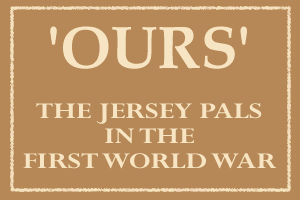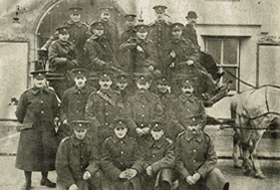 |
 |
 |
|---|
The Jersey Contingent: a brief historyThe War Begins The years leading up the First World War were a period of unprecedented prosperity for the British Channel Island of Jersey. Decades of peace and strong economic growth had served to create a general sense of well-being as islanders looked forward with confidence to the future. Europe’s sudden descent into war at the start of August 1914, therefore, came as an even greater shock. Almost overnight, the island was stopped its tracks as uncertainly and alarm gripped the population. With German armies advancing on Paris, and the regular British Army garrison withdrawn, the defense of Jersey fell to the Royal Militia of the Island of Jersey. Raised from local men compelled by law to serve, this long-standing corps diligently took up position around the island’s harbours and coasts throughout the late summer and autumn of that year. A Contingent is Raised Allied victories on the Continent and the emergence of trench warfare Training for War The new Jersey Company was attached to the 7th Battalion of the Royal Irish Rifles, one of those battalions raised in Trench Warfare at Loos The front line around the French town of Loos had been static and comparatively quiet since September 1915. This meant the trenches there were well suited for introducing units new to the Western Front. The Jersey Company would serve at Loos from January 1916 until August that year. It was a period of introduction, learning the grinding routine of life in and out of the trenches. Despite the area’s quiet status, casualties were inevitable as enemy shelling, sniping and gas gradually took their toll on the small band of Jerseymen. The Battle of the Somme While the Jersey Company served at Loos, further south in France a massive combined British and French offensive Messines and Ypres In October 1916, the 16th (Irish) Division had moved to Belgium to rest and rebuild after its shattering losses on the Somme. The much reduced Jersey Company spent the bitter winter of 1916/17 serving at the foot of the then infamous Messines Ridge, a strongly held German position lying to the south of the town of Ypres. Numbers slowly increased as men returned from hospital or from other assignments, but not enough to return it to full strength. By the spring, with no reinforcements available from Jersey, drafts of British soldiers were the only option. In June 1917, the replenished Jersey Company took part in the successful storming of Messines Ridge. Assisted by the explosion of nineteen massive mines, the British drove the Germans back while incurring minimal losses. In July, the British attacked again around Ypres, although with less success. German resistance and heavy rain hampered the advance and created appalling conditions for the troops. In August, an attack by the Jersey Company near the hamlet of Frezenberg ended in abject failure and resulted in another heavy casualty list. The End With the Royal Irish Rifles The losses in Belgium were one of the factors behind a decision in September 1917 to disband the 7th Royal Irish Rifles. The Final Year of Fighting In January 1918, the remnants of the Jersey Company moved to join the 2nd Battalion of the Hampshire Regiment, a unit with strong Channel Island connections. In April 1918, as German offensives threatened to overwhelm the Allied line, they took part in the fighting around the strategic French town of Bailleul and helped stem the enemy advance. A summer of costly minor battles followed, by then mostly out of the trenches as a war of movement resumed once more. By the autumn of 1918, worn down by its efforts and pushed back all along the Western Front, the German Army was on the brink of defeat. At the end of September, the Jersey Company took part in the final battles in Belgium that finally drove the enemy back from the gates of Ypres. In November, with Brussels almost in sight, the war ended for the Jersey volunteers on 11 November when the Germans accepted Allied terms for an armistice. After the War The last members of the Jersey Company returned to their island in the first half of 1919. Of the 326 who left four |
||
|---|---|---|
|
|
||
Links The Channel Islands Great War Study Group Commonwealth War Graves Commission
|
© Ian Ronayne 2012 No part of this website may be copied or reproduced with permission |
Contact |
|---|